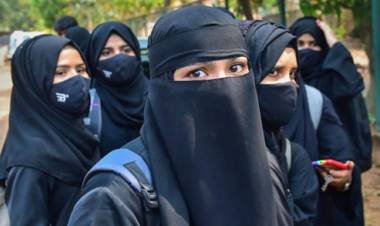Top ten Indian Air Force Aircraft ( 88th Air force Day)

1. The Dassault Rafale

The Dassault Rafale is a French twin-engine, canard delta wing, multirole fighter aircraft designed and built by Dassault Aviation.
The Rafale was developed as a modern jet fighter with a very high level of agility; Dassault chose to combine a delta wing with active close-coupled canard to maximize manoeuvrability. The aircraft is capable of withstanding from −3.6g to 9g (10.5g on Rafale solo display and a maximum of 11g can be reached in case of emergency.
The Rafale is an aerodynamically unstable aircraft and uses digital fly-by-wire flight controls to artificially enforce and maintain stability. The aircraft's canards also act to reduce the minimum landing speed to 115 knots (213 km/h; 132 mph); while in flight, airspeeds as low as 15 knots (28 km/h; 17 mph) have been observed during training missions. According to simulations by Dassault, the Rafale has sufficient low speed performance to operate from STOBAR-configured aircraft carriers, and can take off using a ski-jump with no modifications.
2. The Sukhoi Su-30MKI

The Sukhoi Su-30MKI is a twinjet multirole air superiority fighter developed by Russia's Sukhoi and built under licence by India's Hindustan Aeronautics Limited for the Indian Air Force.
The Su-30MKI is a highly integrated twin-finned aircraft. The airframe is constructed of titanium and high-strength aluminium alloys. The engine intake ramps and nacelles are fitted with trouser fairings to provide a continuous streamlined profile between the nacelles and the tail beams. The fins and horizontal tail consoles are attached to tail beams. The central beam section between the engine nacelles consists of the equipment compartment, fuel tank and the brake parachute container. The fuselage head is of semi-monocoque construction and includes the cockpit, radar compartments and the avionics bay.
3. The Eurofighter Typhoon

The Eurofighter Typhoon is a twin-engine, canard–delta wing, multirole fighter. The Typhoon was designed originally as an air superiority fighter and is manufactured by a consortium of Airbus.
The Typhoon is a highly agile aircraft both at supersonic and at low speeds, achieved through having an intentionally relaxed stability design. It has a quadruplex digital fly-by-wire control system providing artificial stability, as manual operation alone could not compensate for the inherent instability. The fly-by-wire system is described as "carefree", and prevents the pilot from exceeding the permitted manoeuvre envelope. Roll control is primarily achieved by use of the ailerons. Pitch control is by operation of the canards and ailerons, because the canards disturb airflow to inner elevons (flaps). The yaw control is done by big single rudder. Engines are fed by a chin double intake ramp situated below a splitter plate.
The Typhoon features lightweight construction (82% composites consisting of 70% carbon fibre composite materials and 12% glass fibre reinforced composites) with an estimated lifespan of 6,000 flying hours.
4. HAL Tejas

The HAL Tejas is an Indian single-engine, fourth-generation, multirole light fighter designed by the Aeronautical Development Agency in collaboration with Aircraft Research and Design Centre of Hindustan Aeronautics Limited for the Indian Air Force and Indian Navy.
Originally intended to serve as an air superiority aircraft with a secondary ground-attack role, its flexibility permits a variety of guided air-to-surface and anti-shipping weapons to be integrated for multirole and multimission capabilities.
The tailless, compound-delta planform is designed to be small and lightweight.This platform also minimises the control surfaces needed (no tail-planes or fore-planes, just a single vertical tail-fin), permits carriage of a wider range of external stores, and confers better close-combat, high-speed, and high-alpha performance characteristics than comparable cruciform-wing designs. Extensive wind tunnel testing on scale models and complex computational fluid dynamics analyses have optimised the aerodynamic configuration for minimum supersonic drag, a low wing-loading, and high rates of roll and pitch.
5. Mikoyan MiG-29

The Mikoyan MiG-29 is a twin-engine jet fighter aircraft designed in the Soviet Union. Developed by the Mikoyan design bureau as an air superiority fighter during the 1970s.
Sharing its origins in the original PFI requirements issued by TsAGI, the MiG-29 has broad aerodynamic similarities to the Sukhoi Su-27, however, there are some notable differences. The MiG-29 has a mid-mounted swept wing with blended leading-edge root extensions (LERXs) swept at around 40°; there are swept tailplanes and two vertical fins, mounted on booms outboard of the engines. Automatic slats are mounted on the leading edges of the wings; they are four-segment on early models and five-segment on some later variants. On the trailing edge, there are maneuvering flaps and wingtip ailerons.
6. Lockheed C-130 Hercules

The Lockheed C-130 Hercules is an American four-engine turboprop military transport aircraft designed and built originally by Lockheed. Capable of using unprepared runways for takeoffs and landings, the C-130 was originally designed as a troop, medevac, and cargo transport aircraft.
As a cargo and airlift aircraft, the C-130J's crew includes two pilots and one loadmaster (no navigator or flight engineer), while specialized USAF variants (e.g., AC-130J, EC-130J, MC-130J, HC-130J, WC-130J) may have larger crews, such as navigators/Combat Systems Officers or other specialized officer and enlisted air crew. The U.S. Marine Corps KC-130J uses a crew chief for expeditionary operations. The C-130J's cargo compartment is approximately 41 feet (12.5 m) long, 9 feet (2.74 m) high, and 10 feet (3.05 m) wide, and loading is from the rear of the fuselage. The aircraft can also be configured with the "enhanced cargo handling system". The system consists of a computerized loadmaster's station from which the user can remotely control the under-floor winch and also configure the flip-floor system to palletized roller or flat-floor cargo handling. Initially developed for the USAF, this system enables rapid role changes to be carried out and so extends the C-130J's time available to complete taskings.
7. The SEPECAT Jaguar

The SEPECAT Jaguar is a Anglo-French jet attack aircraft originally used by the British Royal Air Force and the French Air Force in the close air support and nuclear strike role. It is still in service in upgraded form with the Indian Air Force.
The Jaguar is an orthodox single-seat, swept-wing, twin-engine monoplane design, with tall tricycle-type retractable landing gear. In its original configuration, it had a maximum take-off weight in the 15 tonne class; and could manage a combat radius on internal fuel alone of 850 km (530 mi), giving the Jaguar a greater operational range than competitor aircraft such as the Mikoyan MiG-27. The aircraft had hardpoints fitted for an external weapons load of up to 10,000 lb (4,500 kg), typical weapons fitted included the MATRA LR.F2 rocket pod, BAP 100-mm bombs, MATRA AS37 anti-radar missiles, AIM-9 Sidewinder missiles, and Rockeye cluster bombs.The RAF's Jaguars gained several new weapons during the Gulf War, including CRV7 high-velocity rockets and American CBU-87 cluster bombs Finally, the Jaguar was equipped with either a pair of French DEFA cannons, or alternatively British ADEN cannons.
8. Boeing C-17 Globemaster III

The McDonnell Douglas/Boeing C-17 Globemaster III is a large military transport aircraft that was developed for the United States Air Force from the 1980s to the early 1990s by McDonnell Douglas.
The C-17 carries forward the name of two previous piston-engined military cargo aircraft, the Douglas C-74 Globemaster and the Douglas C-124 Globemaster II. The C-17 commonly performs tactical and strategic airlift missions, transporting troops and cargo throughout the world; additional roles include medical evacuation and airdrop duties. It was designed to replace the Lockheed C-141 Starlifter, and also fulfill some of the duties of the Lockheed C-5 Galaxy, freeing the C-5 fleet for outsize cargo.
9.Mikoyan-Gurevich MiG-21

The Mikoyan-Gurevich MiG-21 is a supersonic Vietnam era jet fighter and interceptor aircraft, designed by the Mikoyan-Gurevich Design Bureau in the Soviet Union.
India is the largest operator of MiG-21s. In 1961, the Indian Air Force (IAF) opted to purchase the MiG-21 over several other Western competitors. As part of the deal, the Soviet Union offered India full transfer of technology and rights for local assembly. In 1964, the MiG-21 became the first supersonic fighter jet to enter service with the IAF. Due to limited induction numbers and lack of pilot training, the IAF MiG-21 played a limited role in the Indo-Pakistani War of 1965. However, the IAF gained valuable experience while operating the MiG-21 for defensive sorties during the war. The positive feedback from IAF pilots during the 1965 war prompted India to place more orders for the fighter jet and also invest heavily in building the MiG-21's maintenance infrastructure and pilot training programs.
10. Dassault Mirage 2000

The Dassault Mirage 2000 is a French multirole, single-engine fourth-generation jet fighter manufactured by Dassault Aviation. It was designed in the late 1970s as a lightweight fighter to replace the Mirage III for the French Air Force.
The aircraft uses retractable tricycle-type landing gear by Messier-Dowty, with twin nosewheels and a single wheel on each main gear. A runway tailhook or a fairing for a brake parachute can be fitted under the tail, which can operate in conjunction with the landing gear's carbon brakes to shorten landing distances. A removable refueling probe can be attached in front of the cockpit, offset slightly to the right of centre.[citation needed]
Aircraft flight control system is fly-by-wire.
In 1980, the Indian Air Force (IAF) learned of a successful approach by Pakistan to the US that year to purchase F-16A/B fighters, delivery of which was to commence in 1982. By late 1980, the IAF had quickly convinced the Indian government to purchase an equally potent aircraft, as its fleet of MiG-21s and MiG-23s were inferior to the F-16. When evaluating the Mirage F-1 earlier,they became aware of a high performance prototype of the Mirage 2000 in the flight testing phase. There were no other aircraft of this potential in the offering. An internal assessment of the Mirage 2000 was carried out and the Indian Government felt that the French plane was more advanced and a superior response to the F-16s that the US was to supply to Pakistan and approached France for 150 Mirage 2000s. In October 1982, the country placed an order with Dassault for 36 single-seat Mirage 2000Hs and 4 twin-seat Mirage 2000THs (with H standing for "Hindustan") with the possibility of a follow-on purchase of nine aircraft (eight single and one twin-seater aircraft) as war, maintenance and attrition reserve. The purchase of 150 aircraft, could well have paved the way for joint production with Hindustan Aeronautics Limited (HAL), but the number of aircraft ordered (40+9) was too small for such an arrangement. India nevertheless had the option to produce a number of Mirage 2000s under license that was later scrapped due to the country's close relationship with the Soviet Union. This led to the induction of the MiG-29 instead, overriding reservations expressed by the IAF.



























Comments (0)